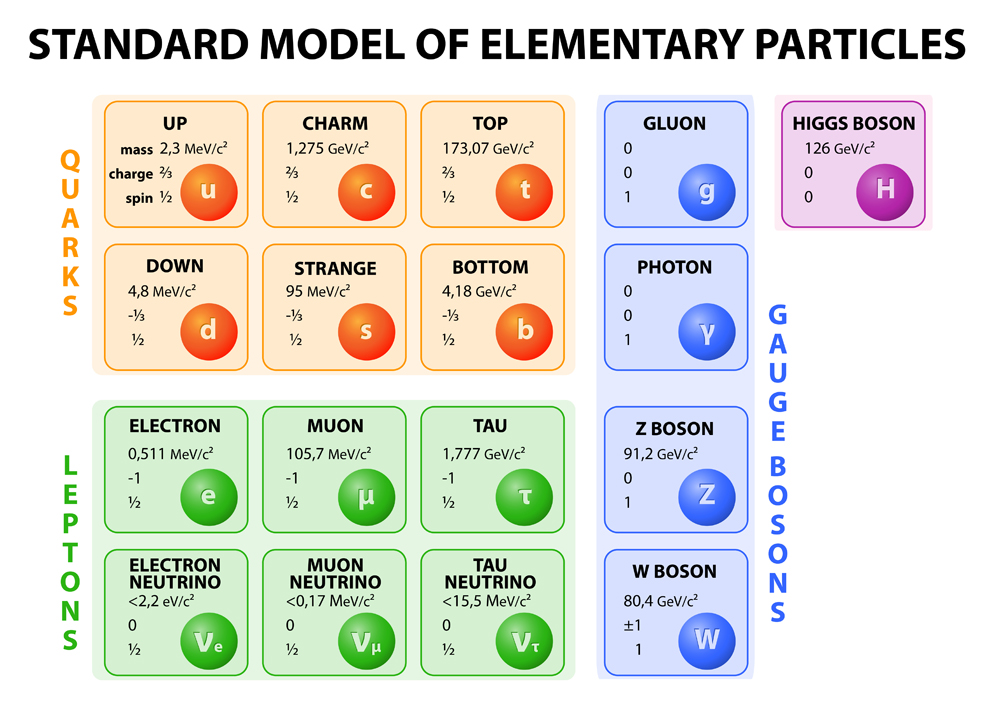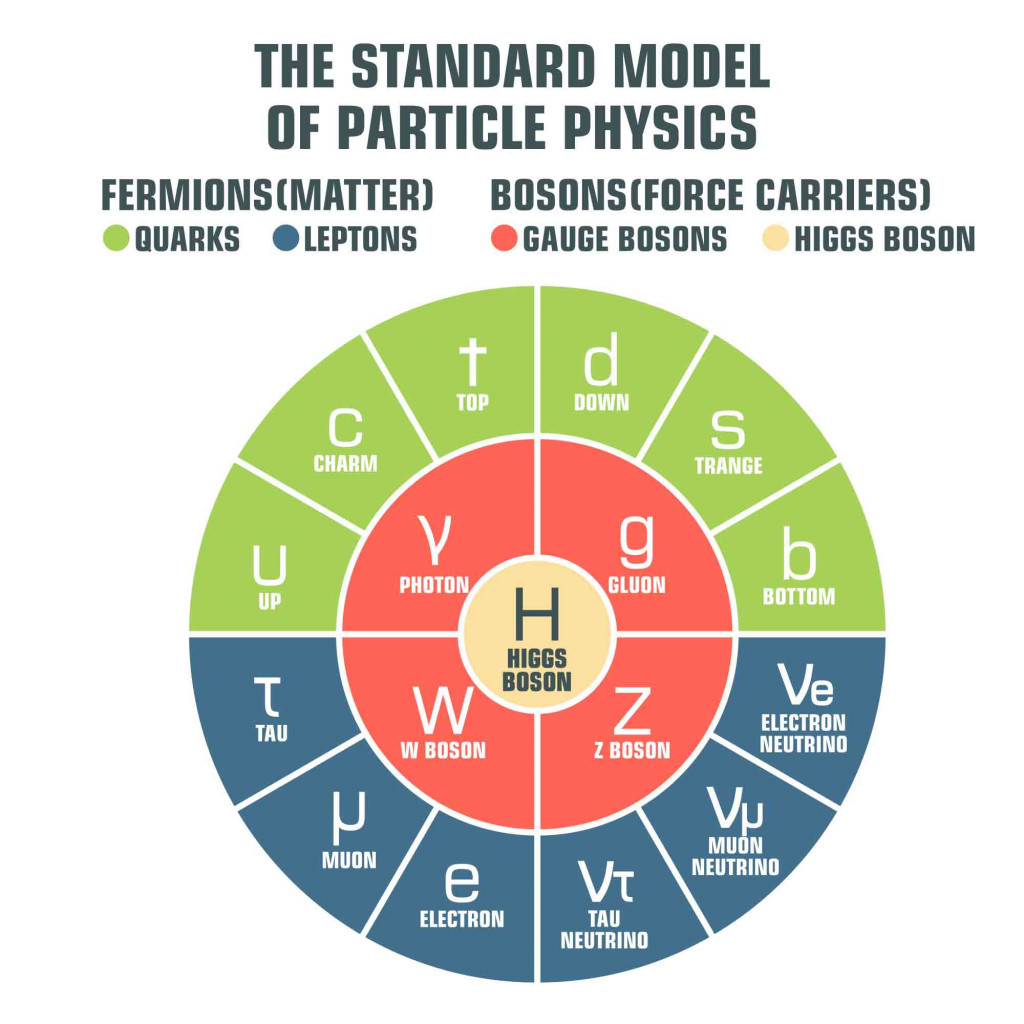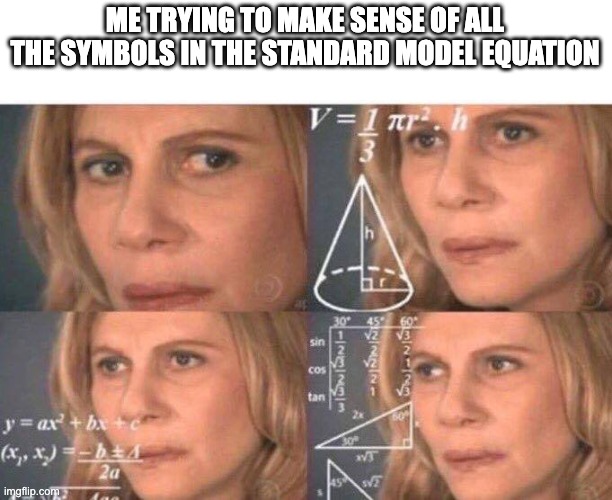Table of Contents (click to expand)
The Standard Model is a theory that attempts to explain everything (the basic building blocks of the universe) using elementary particles (also known as the fundamental particles) and fundamental forces.
“There is a theory which states that if ever anyone discovers exactly what the Universe is for and why it is here, it will instantly disappear and be replaced by something even more bizarre and inexplicable.” – Douglas Adams
When Lucy gets the power to use 100% of her brain, she simply vanishes and sends a simple message—I am everywhere. We humans have always believed that complete knowledge about the universe would lead us to a higher form of existence. It has been the holy grail of both theology and science—to understand everything about the universe. Whereas theology believes in more supernatural ways to achieve this goal, science attempts to find its way through the hard path laid by newer and different theories. Although we are far from understanding everything about the universe, we are making some real progress. There have already been many contenders for the theory of everything, but none have proven to be as theoretically and experimentally accurate as the Standard Model.
What Is The Standard Model?
The Standard Model is a theory in quantum physics (the part of physics that mostly deals with things on the small scale, but has repercussions on larger scales as well) that attempts to answer all the questions about the behavior of matter and its interactions with the things around it. The Standard Model assumes that everything in this world is made of a set of distinct elementary particles that cannot be divided any further. In simpler terms, these particles are the building blocks of our universe (we will talk about them in more detail shortly).
Just as the elementary particles make up the matter, there are four fundamental forces in nature that are the roots of all kinds of different forces we experience in daily life. These fundamental forces are: electromagnetic force (the unified force due to the effects of electric and magnetic field), weak and strong interactions (the forces that govern the binding and decay processes of atoms), and our beloved gravity, which needs no introduction. All the other forces fall under these four forces.

Also Read: What’s Wrong With The Standard Model Of Particle Physics?
What Are Elementary Particles?
Humans have always wondered what everything is made of. We have had many different theories, not just from a physical point of view, but from theological and philosophical standpoints as well. It has always been one of the most substantial questions in the history of humankind. What are we and everything around us made of? What is the smallest unit of this universe? What is the smallest unit of matter?
First, we used to believe that the matter is made of solid atoms that cannot be divided any further, but then as we experimented more and more, we realized that there are units—particles—that are even smaller. Even the atom, which we used to believe to be the smallest scale in the universe, is composed of something that is even smaller. That was when we discovered the existence of a negatively charged electron around a positively charged nucleus.
When scientists dug deeper into the nucleus, they found that this little fellow is made of not just a single kind of particle, but two different kinds of particles that are smaller than the nucleus and have different electrical properties. This mouse chase keeps going, as we keep striving to find the smallest unit of the universe.

We have found many different particles by now, including protons, neutrons, and electrons, but what makes some of them elementary? Well, it’s elementary, as the name suggests. The particles that are not made of anything smaller than them, or in other words, the particles that cannot be broken down any further, are known as the elementary particles. An electron cannot be divided any further into a particle that is more fundamental, whereas protons and neutrons are made of even smaller and more fundamental particles, known as Quarks. Thus, electrons and quarks are just a few examples of elementary particles.

Also Read: What Is The Smallest Particle We Know?
How Does The Standard Model Explain Everything?
As mentioned earlier, the Standard Model is a theory that attempts to explain everything (the basic building blocks of the universe) using these elementary particles (also known as the fundamental particles) and the fundamental forces. However, there is a catch, the Standard Model, as of now, cannot explain gravity. The model tries to unify all the forces and particles into a single equation that is able to describe all the ways in which matter behaves, but it cannot account for gravity. This is why it is known as the theory of almost everything.
The way it does this is by using a single equation that gives a Lagrangian (in very simple words, a Lagrangian is basically just the difference between the kinetic and the potential energy of the system) controlled by parameters that depend on the values coming from the elementary particles. Various different quantum mechanical operators (just a fancy name for functions that perform actions on the Lagrangian) can be used to obtain the information and equations about different physical scenarios from this Lagrangian.

Even though it cannot explain everything in nature at the moment, the Standard Model is still the most successful theory that humans have ever devised. It matches with the experimental results very well and works as the basis of a plethora of newer theories that attempt to unify the force of gravity with the rest of the model, although none have succeeded.
Conclusion
The Standard Model is the closest we have come to a theory of everything and we continue to improve and build upon it. Although we are far from our goal of finding out everything about the universe, the Standard Model is a very important milestone. Someday soon we will surely have a theory of everything, at which point the universe will turn into something utterly bizarre and inexplicable… or maybe it already has!
How well do you understand the article above!

